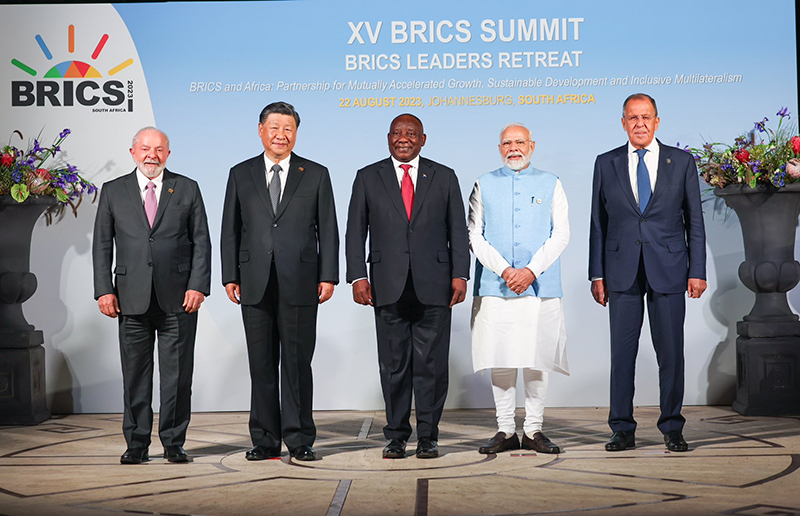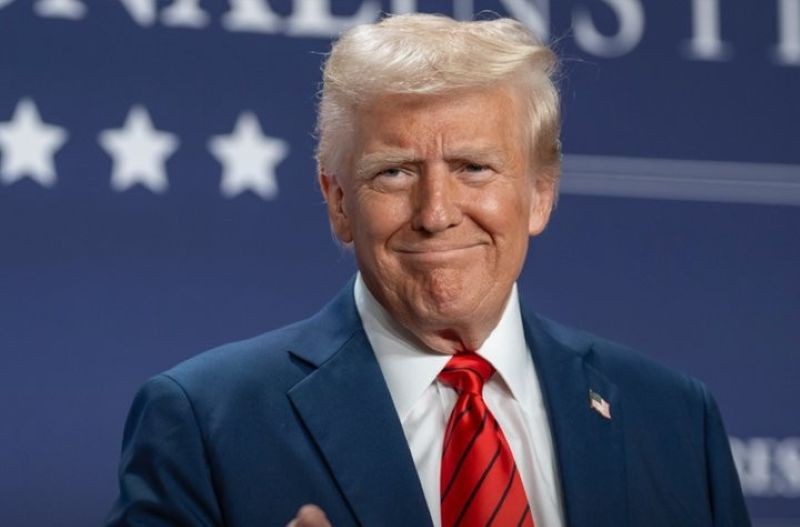Conceptualizing BRICS: Is the Confusion on Fusion over?

The entire world was eagerly waiting for the outcome of the15th BRICS summit which concluded on 24 August, 2023 in Johannesburg, South Africa.
The summit took place at a critical juncture when the existing global order is facing unprecedented challenges in the domain of economic integration, global governance, and geopolitics.
The frozen rivalry between the United States and China, outdated Bretton Woods institutions,ongoing Russia-Ukraine war, disruption of global supply chain system, and subsequent Western sanctions have further motivated to challenge the existing US-led so-called ‘liberal’ international order.
Here, one might wonder why is there suddenly a stampede to join or show interest in BRICS.
The answer is that, over the years, BRICs has emerged as a steadily progressing group unlike other groupings, small, medium and large, with exception to ASEAN and BIMSTEC.
While the United Nations is tottering, various other regional groups in Africa have lost their sheen and are at the verge of collapse for want of cooperation among members.Against this backdrop, countries from the Global South are showing interest in joining this group currently accounting for around 27% of world’s land mass, 42% of its population and over one-fourth of the world’s GDP.
With a combined GDP of BRICS having crossed $27.6 tn. now, it has emerged as a heavyweight challenger to the G-7 which has a GDP of $ 43.78 tn. and if we add the GDP of six new entrantswhich is around $ 3.28 tn., it comes to$30.68 tn. which can present a potent danger to the existing global economic order led by the West.
This challenge will be even graver when some more aspirants join the BRICS (now BRICS+) after the summit in Russia next year.
Originally conceptualised in 2001 by a Goldman-Sachs economist Jim -o-Neil as BRIC (Brazil, Russia, India and China) as the fastest growing economies that would become the top economic giants toppling the USA from its monopoly, the group accepted the Republic of South Africa as its fifth member in 2010 perhaps at the Chinese insistence.
Now, with around 40 countries having shown their interest in Joining the grouping, eight have already formally applied for the membership while 11 others are in serious dialogues for the membership.
After much deliberation on the criteria and conditions for entry of new members (which was finalised just before the summit), the summit approved the applications of six countries-Argentina, Egypt, Iran, Ethiopia, Saudi Arabia and the U.A.E. which will be formally inducted in BRICs on 1st January, 2024. They all are comparatively healthy and emerging economies eager to find an alternative to the existing economic order.
Though many under-developed/ developing nations, having gradually realised the viciousness of the Chinese debt trap, are worried about the Chinese dominance, the possible de-dollarisation and low growth of western economy is slowly alienating these countries from the American dream.
Hence the new non-Dollar economic order is gaining traction. Many poor African nations have, in fact, started demanding that the western mining companies stop milking the African nations.
Though the BRICS block, formed with the objective of improving global economic situation and reforming the financial institutions in wake of the economic melt-down in the first decade of the millennium, ithas rightly been called an asymmetric block with two of its members- China and Russia-not being democracies.
However, despite these constraints, the block has achieved considerable success in various fields like most notably the formation of the New Development Bank, headquartered in Beijing and set up with contributions from the member countries, in 2014 with the aim to provide soft loans to the member countries for their developmental needs.
Simultaneously, the members of bloc were trimming their US holdings and by the end of the same year, China trimmed it to US$ 1.25 tn while Brazil, India and South Africa had reduced their US holdings to 26.7 bn, 77.5 bn and 10.3 bn respectively.
In order to skip the compulsion of routing their international economic transactions via USA through SWIFT, the four major members have developed their own alternative systems-SPES (Russia), CIPS (China), SFMS (India) and PIX (Brazil). The group is also working on strengthening the North-South Trade Corridor to avoid the western interference.
Besides, it is planning to launch BRICS cable and another project for cooperation in information and communication technology.
Let us analyse this confusion over the fusion.
The expansion of BRICS and the establishment of a common currency for the Bloc was on the top of agenda of the summit.
The indiscreet expansion of the group without examining the applications and without any criteria is always fraught with the possibility of making BRICS inactive as it is always more difficult, if not impossible, to find a consensus (which is mandatory in BRICS)on any issue of importance.
Thus, it became imperative to first arrive at an agreement on the norms and parameters according to which an application should be examined.
This is what India and Brazil have been advocating contrary to the narrative being created that these two are against any expansion.
Wary of the possibility that China might hijack BRICS by including some countries which it could bully due to its sheer economic power and with Russia supporting the Chinese stance, India and Brazil wanted to go slow on the expansion by first deliberating and deciding on the criteria for new admissions.
It seems that the second issue of the common currency is also was not discussed at all as there was a lack of consensus among the existing members.
Though Russia, compelled to play a second fiddle to China in the current geo-strategic scenario, was reportedly in support of the Chinese demand for a common currency, India and Brazil were not prepared for it fearing the tightening of Chinese grip on the bloc.
The demand for de-dollarisation also did not find any overt mention in the 24-page long Final Document of the summit. India understandably was not in favour on the de-dollarisation or a common currency for two reasons.
First, India is the only member of BRICS which is steadily steering on the path of smooth economic recovery post -covid thereby negating the need for a change of currency at this stage. Moreover, the USA has emerged as the biggest trading partner of India relegating China to the second position.
With India-U.S. trade steadily growing, India would certainly not like to rock the boat at this juncture. Instead of a common currency, South Africa has given a more practical solution which is to accept the currencies of all the five members withing each other’s territories.
The countries which will join the BRICS next January these are, except Ethiopia, either one trillion-dollar economies or are steadily progressing ones.
The inclusion of Ethiopia, which has a small GDP (nominal) of US$ 126.78 bn. as compared to other entrants at the cost of more deserving candidates like Mexico and Indonesia- both one trillion Dollar plus economies- is confusing.
It appears that the summit in South Africawanted to give bigger representation to Africa in line with its theme "BRICS and Africa: Partnership for Mutually Accelerated Growth, Sustainable Development and Inclusive Multilateralism.
As expected, the summit touched upon various flash points on the Globe, called the developed nations to continue their support of $100 bn. to the developing countries to fight climate change, appealed WTO to be more transparent, open and fair in its dealings with the developing and least-developed countries by giving them special and different treatment.
The Summit also called for greater representation of the EMDC (emerging markets and developing countries) in international organisations.
However, the 92- para document devoted only four lines on Ukraine without mentioning Russia (perhaps at the insistence of Russia and China) and openly supported Iran by calling for resumption of JCPOA. Other point covered were the usual ones- SDGs, UN reforms, terrorism, digital economy (clearly a foot-print of India)a post covid health and economic recovery.
However, the growing popularity of BRICS and the impressive queue for its membership is reason enough to warn the existing unipolar system that the multi polarity has arrived and it is here to stay.
With the Global South gaining strength with India becoming its voice and working as a bridge between the Global North and South, the world may see economic upheavals in the foreseeable future.
A word of caution here- the expansion of the BRICS should be done only after examining the applications on the basis of some criteria.
This might sound difficult, yet it is not impossible to find some commonalities like a stable government (which might not necessarily fit into the straight-jacketed compartmentalisation of the term “democracy” by the west) and a steady economic growth.
The criteria decided by the summit but yet to be made public, needs further fine-tuning inorder to get a clearly articulated rules of expansion.
About the Authors:
Ambassador J.K. Tripathi, IFS (Retd), India’s Former Ambassador to Zimbabwe
Dr. Sandeep Tripathi, Assistant Professor at Sharda School of Humanities and Social Science, Sharda University.



